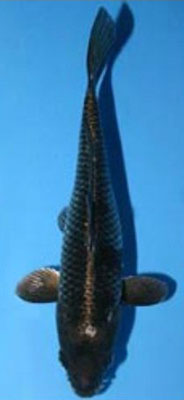
Karasugoi
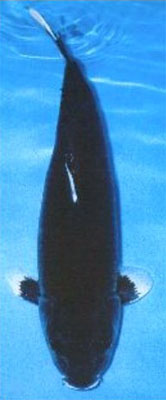
Hajiro
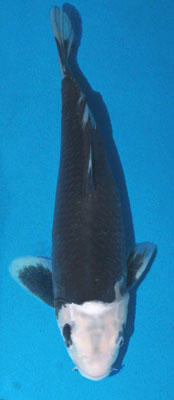
Hageshiro
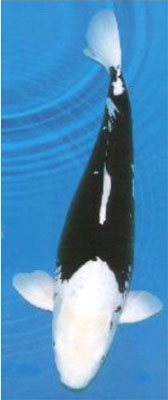
Yotsushiro
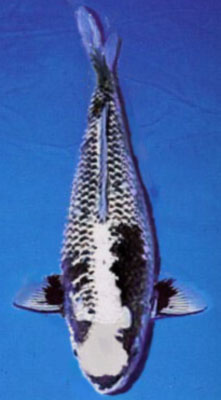
Sumi Nagashi
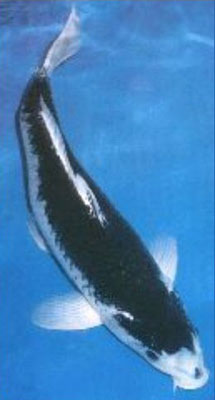
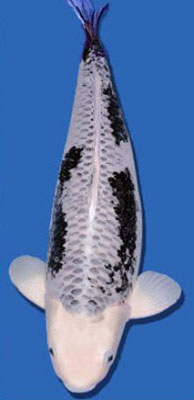
Matsukawabake
This is a catch-all class for non-metallic koi that have been formally recognized and named but do not fit into any of the other categories. There are many interesting varieties here.
(click to resize)
 Karasugoi |
 Hajiro |
 Hageshiro |
 Yotsushiro |
 Sumi Nagashi |

 Matsukawabake |
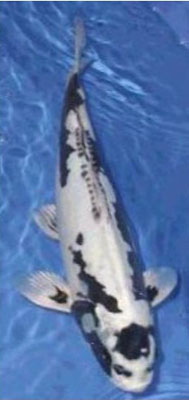
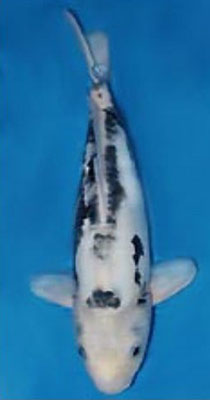
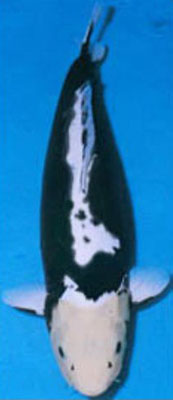 Kumonryu |
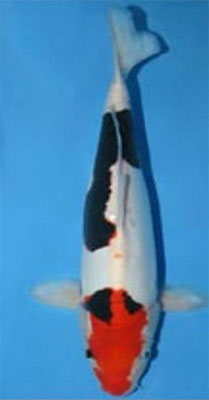
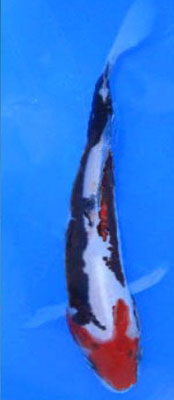
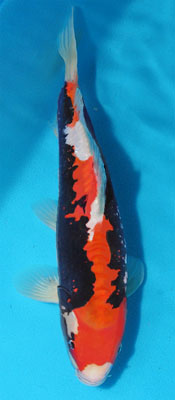 Beni Kumonryu |
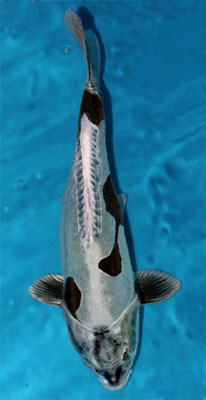
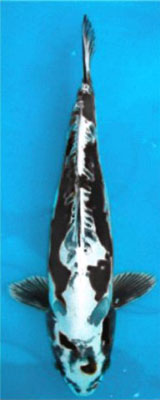
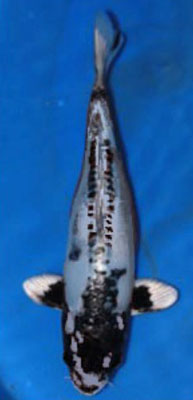 Kikokuryu |
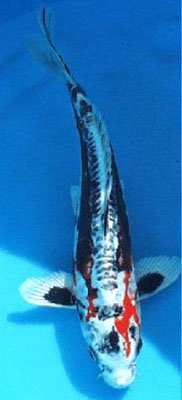
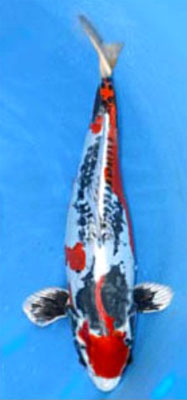
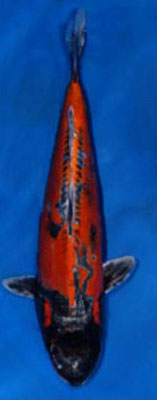 Beni Kikokuryu |
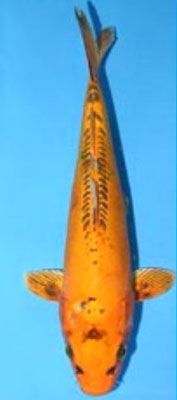
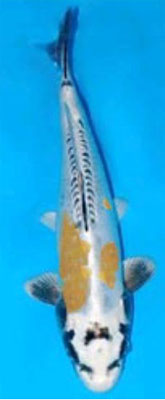
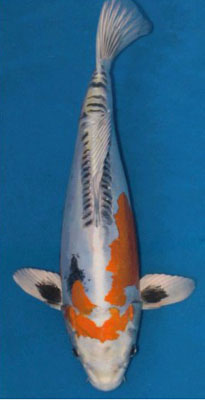
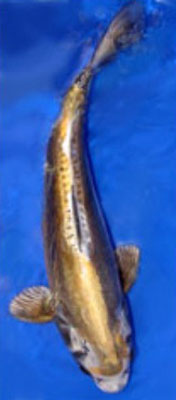 Kin Kikokuryu |
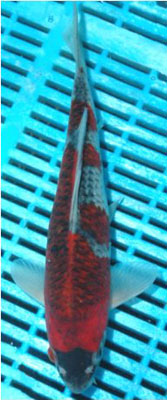
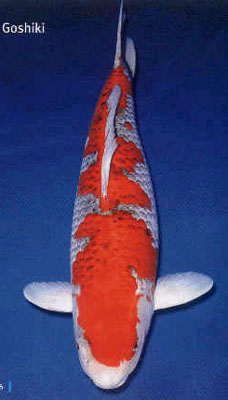
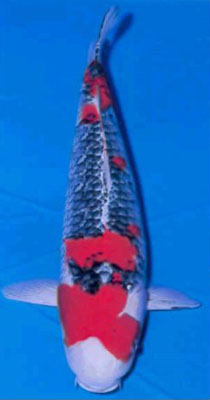
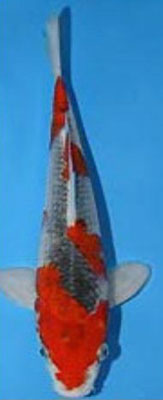
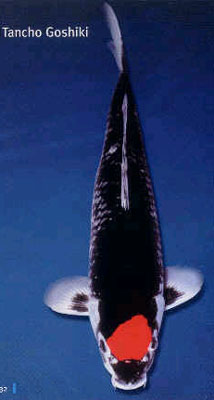 Goshiki |
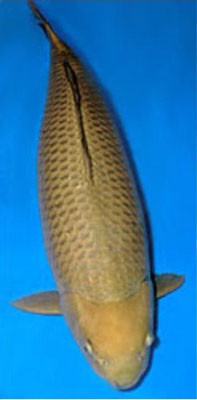 Chagoi |
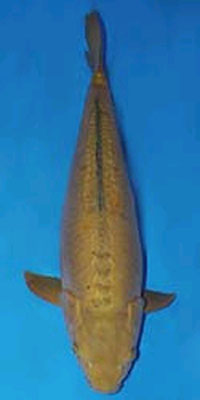 Doitsu Chagoi |
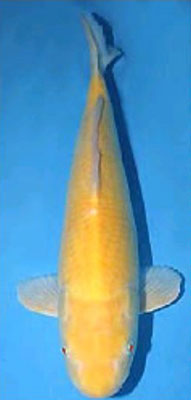 Kigoi |
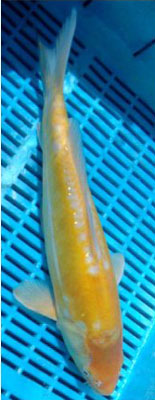 Doitsu Kigoi |
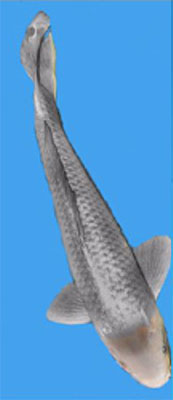 Soragoi |
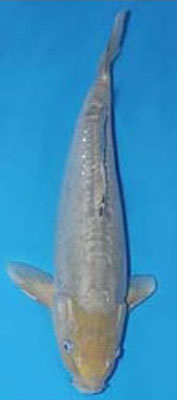 Doitsu Soragoi |
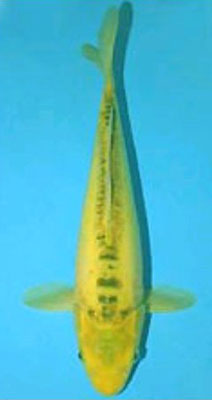 Midorigoi |
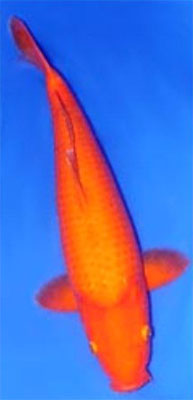 Benigoi |
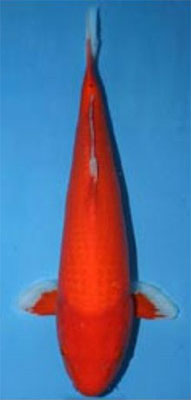 Aka Hajiro |
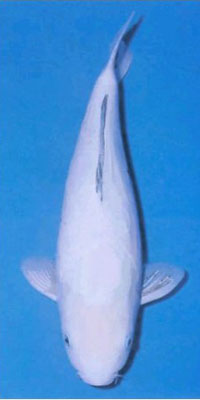 Shiro Muji |
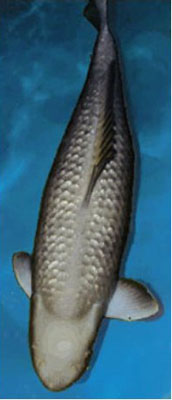 Magoi |
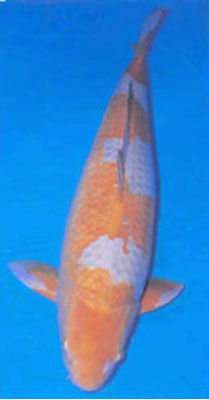 Ochiba Shigure |
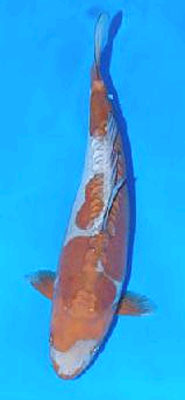 Doitsu Ochiba Shigure |
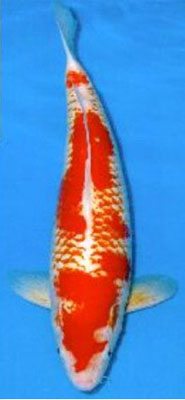 Kanoko Kohaku |
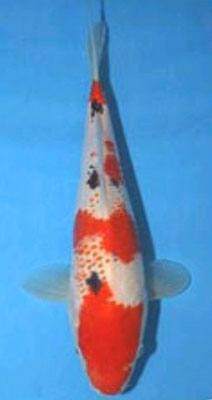 Kanoko Sanke |
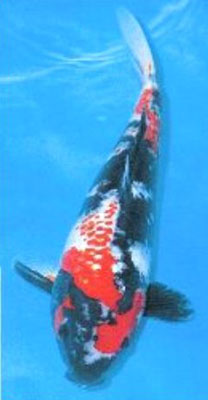 Kanoko Showa |
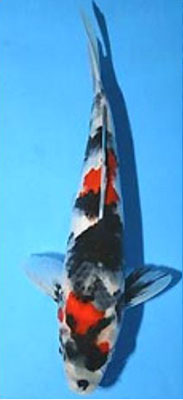 Kage Showa |
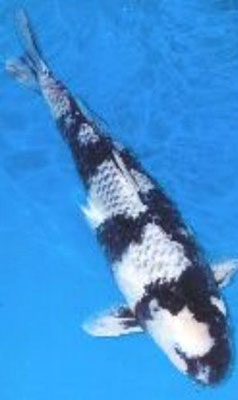 Kage Shiro Utsuri |
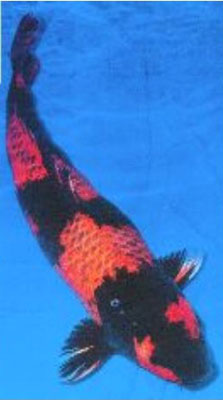 Kage Hi Utsuri |
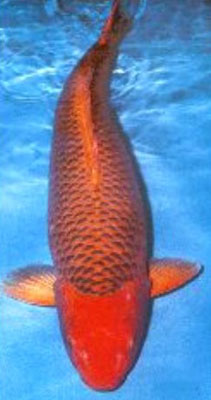 Aka Matsuba |
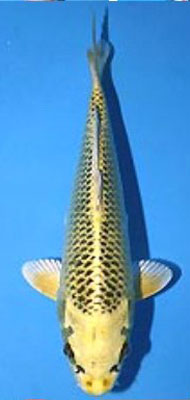 Ki Matsuba |
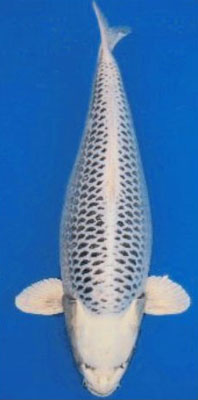 Shiro Matsuba |
KAWARIMONO (ALL OTHERS)(no metallic koi allowed)
We finally get to the end and it is a catch all class for all of the other koi that do not fit into one of the other classes. The list is huge but here are some of the favorites.
Included are all of the Karasugoi or crow carp family that are black with various white markings on the body and fins. Depending on how much white you have Hajiro (black with white only on the tail and pectoral fin tips), Hageshiro (black with white on tail and pectoral fin tips and on the head), Yotsushiro (Hageshiro with all white head), Kumonryu (Doitsu koi with killer whale pattern) and Matsukawabake (koi that changes from black to gray depending on water temperature forming a net black pattern).
There is a very new koi that has been put into KAWARIMONO due to lack of a better place because it is metallic and does not belong in KAWARIMONO. This is the Bene(red) Kumonryu called Kikokuryu. It is a metallic Kumonryu with a red pattern. It probably should be moved to Hikarimoyo because the black looks metallic so it has black, white and red metallic colors.
Next in favor is Goshiki meaning 5 colors that are white with a red Kohaku pattern and two shades of blue and black netting not only on the red but also on the white. Cool water makes the colors darken. It is important for Goshiki to have a clean red and white head with no sumi markings.
The next favorite is the Chagoi or brown/green tea colored carp. These koi grow fast and very large and become the favorite in the pond by their gluttony.
Also in solid colors are the Kigoi (yellow koi), Soragoi (gray blue koi), Midorigoi (green koi), Benigoi (red koi), Aka Hajiro ( red koi with white fin tips) and Shiro Muji (white koi).
Next is a very recent cross between Chagoi and Kohaku or Asagi called Ochiba Shigure. This koi reminds people of autumn leaves because the hi shows up as a bright mustard pattern on a gray body with black netting over the whole body.
The Doitsu version of Ochiba Shigure has been called “antique” due to the colors.
The next group is the Kanoko group. Kanoko means “fawn” describing a dappled Kohaku red pattern that looks like cherry blossoms. This group includes Kanoko Kohaku, Kanoko Sanke and Kanoko Showa.
Next group are the Kage (robed)group. They include Kage Shiro Utsuri, Kage Hi Utsuri, Kage Showa.
The last group are the non-metallic Matsuba koi.
They are Aka (red) Matsuba, Ki Matsuba and Shiro Matsuba.
There are also Doitsu versions of all of the above.
(http://www.akca.org/library/koiclass.htm)
This catch-all grouping, includes various types that belong to lineage other than the standard twelve, they are derived from two lines, or are too different to be recognized as koi of a certain lineage, they are placed in this grouping because their pattern is quite distinctive compared with the types in that variety. Such examples include the Aka Hajiro of the Kohaku and the Kage Showa of Showa Sanshoku lineages. Hybrids of two varieties include Showa Shusui and the Goshiki.
Koi of the Karasu lineage such as the Kumonryu and Sumi-nagashi.
Karasu means "crow" in Japanese, and refers to the deep black colour of these koi which is like that of the bird. This lineage includes the "Karasugoi" whose whole body is black, the "Hajiro" whose pectoral fin tips are white, the "Hageshiro" whose pectoral fin tips and head are white, the "Yotsujiro" whose pectoral fin tips, head and caudal fin are white, and the "Matsukawa-bake" whose white and black patterns change according to the season.
"Kage" which means "shadow" or "phantom" refers to the hazy black pattern which covers many of the back scales.
Kage Utsuri are the Utsuri of which such a blurred reticulate pattern is present. Being koi of Utsuri lineage, the Kage Utsuri should have clear and deep Sumi patterns. Also, it is important that a clear reticulate pattern covers the Kage scales.
"Kage Showa" are Showa Sanshoku with the shadows Sumi and reticulate pattern basically on the white portions. These koi must have the clear, solid Sumi of the Showa, as well as a beautiful tricolour pattern.
Goshiki means five colours.
The Goshiki were first produced by crossing Asagi with Aka Bekko or Aka Sanshoku. Today, however, the Goshiki come from an Asagi X Taisho Sanshoku cross. They have the blue (both light and dark) of the Asagi and the three colours of the Taisho Sanshoku, giving them an overall purplish appearance. Deeply coloured Hi in a Sandan pattern is preferred, as is a bright, clear Hi on the head.
Kanoko which means "fawn" refers to the red dappled pattern found on some koi, such as "Kanoko Kohaku", "Kanoko Sanshoku" and “Kanoko Showa". Incompletely or spotty dappled patterns are undesirable. Koi with red dapples forming clumps like bunches of grapes are called "Goten-zakura". The Hikari forms of Kanoko Kohaku and Goten-zakura are called "Sakura Ogon" and "Kin-zakura" respectively.
Ki-goi are koi with a bright yellow body. They are albino Ki-goi with red eyes which should not be crossed with koi that have black eyes. However, they are interesting from a genetic point of view. Red eyes are also sometimes found in white koi, Kohaku, and Platinum Ogon. Albinos of the Kohaku tend to have brownish, dapple-patterned Hi.
Cha-goi are saffron coloured koi found among Ogon broods. Doitsu-goi of this type grow very large in a short time. Large ones are worth appreciation. As their colouring becomes bright in the autumn, and they can be tamed easily. Young Char-goi are greenish but become brownish as they grow, and show a slight reticulate pattern.
Ochiba-shigure are koi with green and grey patterns, and came from the Cha-goi line, which in turn came from the Ogon. Some of them are excellent, as each scale appears clearly defined. The Doitsu lineage are very beautiful, and are sought by some fanciers.
Midori-goi are a hybrid of a female Shusui and a male Yamabuki Ogon. They are green koi with either black or silvery scales, and because they are of the Shusui blood, the colouration as they mature tends to become blackish or whitish green. The Midori-goi should have clear, unspotted heads and neatly aligned scales along the dorsal ridge.
Backcrossing the Midori-goi to the Shusui Yoshioka produce "Zuiun", whitish koi with a purplish blue back, "Kinshu", orangish bodied koi with a greenish blue back, "Raigo", Zuiun with Hi on the abdomen, and "Enyu" Zuiun with Hi on the back, too.
Sanshoku Shusui with a blue back typical of the Shusui, plus a Taisho Sanshoku pattern. "Showa Shusui" likewise with a Shusui base over which the Showa Sanshoku pattern appears, should have a beautiful blue plus the deep Sumi of the Showa lineage. The "Goshiki Shusui" a hybrid of the Goshiki and the Shusui is an elegant koi. The "Bunka Sanshoku" or "Kintobi" is produced from Taisho Sanshoku X Shusui crosses, and are Taisho Sanshoku with shiny pectoral fins.
(http://australiankoiassoc.bizland.com/Appreciationofkoi.chtml)
Kawarimono- A category for many types of koi that do not fit into a specific one listed. Also includes some Doitsu.
Aka Matsuba - A red Koi with black markings in the center of the scales, the red head does not have markings.
Ki Matsuba - A yellow based equivalent of the Aka Matsuba
Benigoi (Aka Muji) - Benigoi is a deeper solid red color than the Aka Muji which is also red in color
Chagoi - A single colored koi ranging in color from brown to tea to light brown or saffron color
Kigoi - Bright Yellow Koi whose color should be of an even hue all over
Akame Ki-goi - Same as Kigoi but with pink (albino) eyes
Shiro Muji - Pure White Koi
Magoi - Black Koi
Soragoi - Blue/Grey Koi of single color
Ochibashigure - "Rain on Autumn Leaves", Blue-Grey Koi with a Mustard or brown Pattern
Hajiro - Black Koi with White tips on the caudal and pectorals fins
Aka Hajiro - Red Koi with White tips on the caudal and pectorals fins
Hageshiro - Similar to the Hajiro Koi, but with White on the head and nose
Kumonryu - "Dragon Fish" Doitsu White Koi with random Black patterns (Patterns are often unstable)
Beni Kumonryu - Kumonryu with additional Red patterns
Karasugoi - Black Koi with Red belly, it literally means Crow
Midorigoi - Usually Doitsu, Green/yellow Koi with black or silvery scales often transparent looking, especially when young
Kikokuryu - Metallic Kumonryu, comes in many colors from orange to red to silver and some black patterns
Silver Kikokuryu -Metallic Kumonryu with predominantly silver color
Beni Kikokuryu - Metallic Beni Kumonryu.
Kin Kikokuryu - Metallic Kumonryu with Gold Pattern
Ginga - "Galaxy" Shiny Black koi with some cream patterns
Kanoko Kohaku - The Hi markings on this Koi are called Kanoko (dappled) on the body, but the Hi on the head almost always remains solid
Kage Showa - Grey areas show on the white as opposed to black, this sometimes changes to black as they mature
Doitsu Soragoi -Blue/Grey Koi of single color with doitsu scales
Doitsu Chagoi - A single colored koi ranging in color from brown to tea to light brown or saffron color but with doitsu scalation
Doitsu Ochiba - Blue-Grey Koi with a Mustard or brown patterns and doitsu scales
(http://www.thekoikeepers.com/varieties/varieties.html)